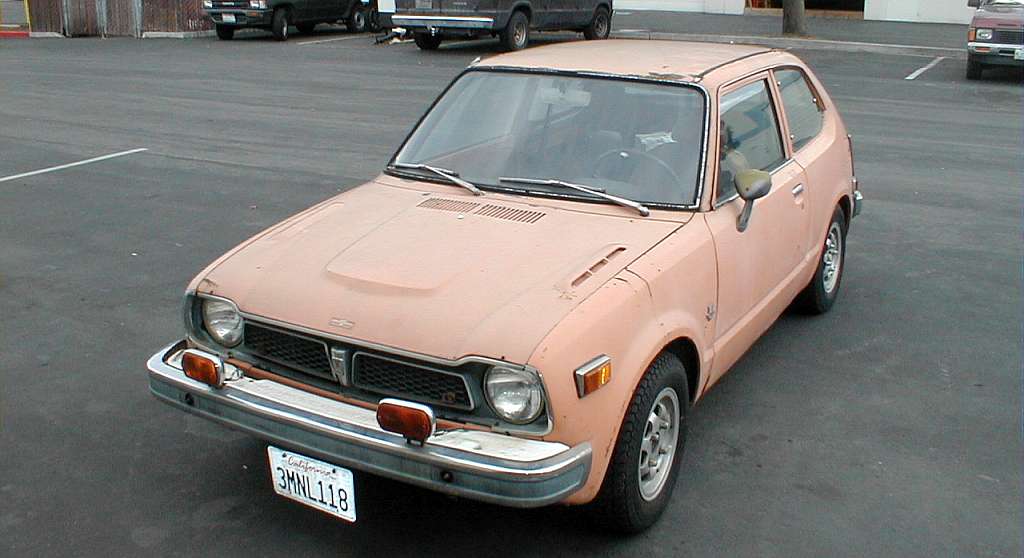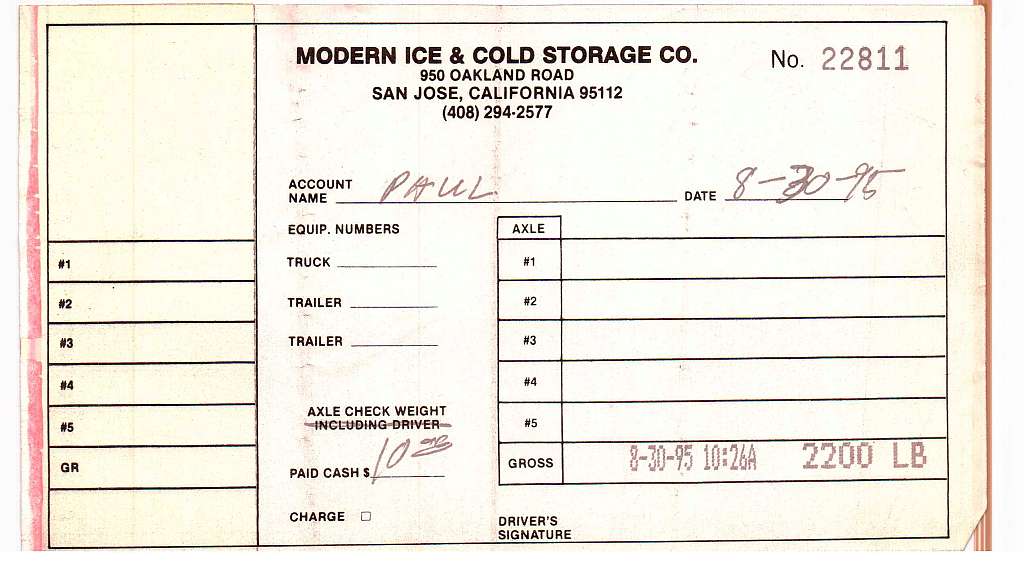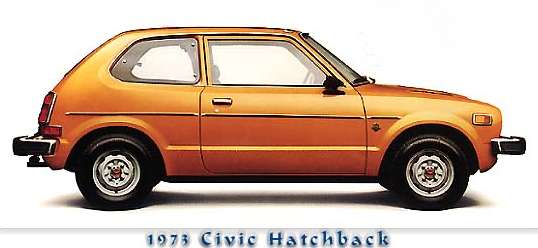
A stylish view of the car. I never did wire in those fog lamps. I did get it street legal.

I took the car to the ice plant where they could weigh it. It came in a 2200 pounds with no drive. Since the Civic had a GVW (gross vehicle weight) of 2400 pounds, that meant the structure of the car would only take 200 pounds more. So no luggage if you weigh 200 pounds. See why it was a good idea to remove the passenger seat? The car sat level unlike when it had the 6-V batteries in the trunk. The batteries in the center all lower the center of gravity and reduces the polar moment of inertia.

Here is what the car would have looked like new. It was a fun project, but taught me electric cars are impractical with lead-acid batteries and dc traction motors. This was back in 1995.












